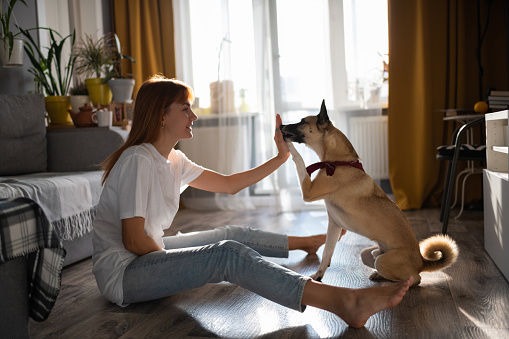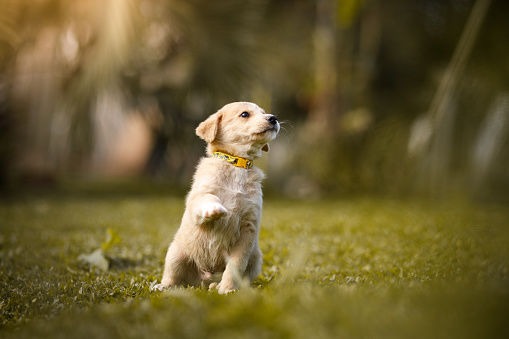Getting a dog can be a great addition to your family. They make awesome companions and having a pet has many different benefits. However, having a puppy can feel very much like having a toddler, as you will require incredible patience to teach it the rules and ensure he is effectively trained so that he demonstrates good behavior.
Training your dog basic obedience, such as to sit, wait and come to you when called, allows you to cultivate a healthy relationship, and it also gives your puppy the freedom to be more independent, whilst being safe. In this article, we will discuss a few ways you can properly discipline your little furry friend.
1. Set Rules and Boundaries
The number one training tip is to decide on the house rules. This is something that you should do before your pet even arrives. Deciding on the rules is important so that you know what your puppy can and cannot do. This way you will be ready to set the boundaries. Be mindful that it will not know this instantly, and you will have to teach it over time.
Rules you should consider, for example, include whether the dog is permitted anywhere around the house or if there will be some restrictions. Most pets enjoy sitting on sofas with their owners or lay on rugs – if this is something you want to avoid, you will need to teach your puppy from the start. If you decide on the rules early on, it will make it easier for you to train your dog and prevent both of you from getting confused.
2. Get Additional Support if Needed
Training a new puppy may not be for everyone, particularly if you have a busy life outside of the house for periods of time. It can also be extremely overwhelming if you have no experience or knowledge about training pets.
If you are struggling to train your canine friend, you have the option to hire an expert private trainer to ensure your pet is still taught basic obedience, which is vital for a healthy relationship between you and your dog as well as the animal’s relationship with other pets. However, training is usually a positive bonding experience between the dog and owner, and this rapport may not develop fully if you do not make time for your furry friend. If you are struggling on your own, you can have a trainer to support you in the sessions whilst still being the one in charge and the one your dog will answer.
3. Answering When Called
After you decide on a name for your puppy, it is vital that it learns how to recognize it when you call so that he can obey and come to you. This is the first command you may want to master, as it will establish your alpha status in the relationship. When your pet comes to you after you call, ensure you it knows that this is a very positive achievement by using positive reinforcement.
4. Allow Your Pet Their Own Space
It is very important for your furry friend to have its own space in the house, particularly if you are not planning on having it stay outside in the garden. Providing your pet with its own private space helps them feel secure and comfortable around the house and it can also offer them peace particularly if you have children or other pets in the house.
5. Outdoors Potty Training
If you are keeping your puppy inside, you must start potty training as soon as possible, to minimize accidents indoors. Your canine best friend will most likely be spending the majority of their time indoors, but you want to make sure that it still urinates and defecates outside. This can be a challenging part of the training process, so if you need additional support, there are many expert guides to teach you, and here is a good one that you can use to get started. Always remember that training a puppy requires training and patience, but with determination, you will achieve it.
6. Reward
As mentioned above, a great way to discipline your pet is through the use of positive reinforcement, which is greatly supported by research. You can use toys, treats, or saying the words ‘good boy/girl’ and pet your puppy. This method, however, is for good behavior only, and bad behavior should never be encouraged through positive reinforcement otherwise the puppy will get confused.
7. Punishment
As much as you must reward your pet for positive behaviors, you should also acknowledge the negative ones. Bear in mind that the purpose is to make the pet aware that it has done something wrong. Your animal should not fear you or be scared of you, and violence must not be used. Instead, you can, for example, make loud noises to distract your pet from whatever they are doing so that their focus shifts on to you.
Another good method is to put your puppy on a time out for a few minutes, and not give them any attention. This way they will recognize the difference in your behavior and be able to make the association between your distance and their previous negative behavior.
8. Stay in the moment
Dogs tend to live in the moment, therefore action against a positive or negative behavior must be taken precisely when it happens. This is necessary so that your pet associates his reward with the positive behavior and punishment with the negative behavior. For example, If your pet does something good, ensure they get their treatment immediately. And if it urinates in the house, let them know that behavior is not acceptable. They will not learn immediately but constant repetition will emphasize what needs to be learned.
Disciplining your puppy can be very challenging and it is indeed a long process. You will not have a well-behaved puppy overnight so be prepared for this. Pets learn through consistency, therefore you must continue with training sessions, even when you feel like giving up. Every moment provides a time to train and discipline your pet, but also ensure that you can enjoy each other’s company to the fullest.


